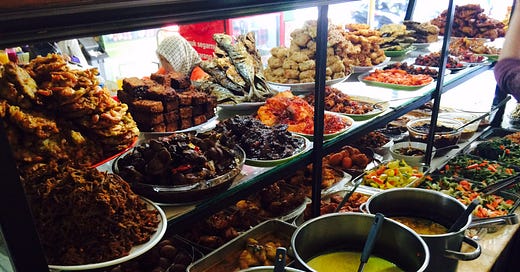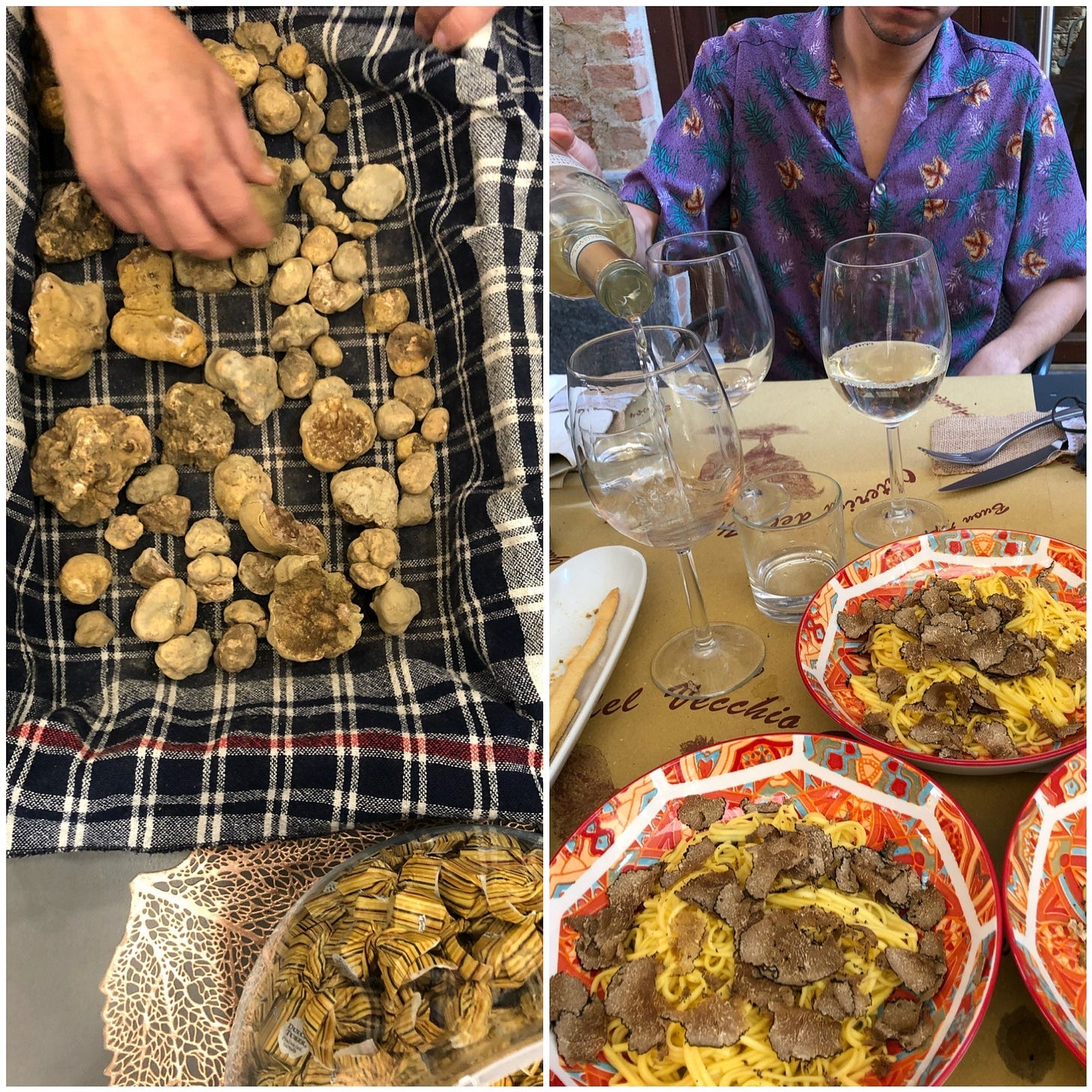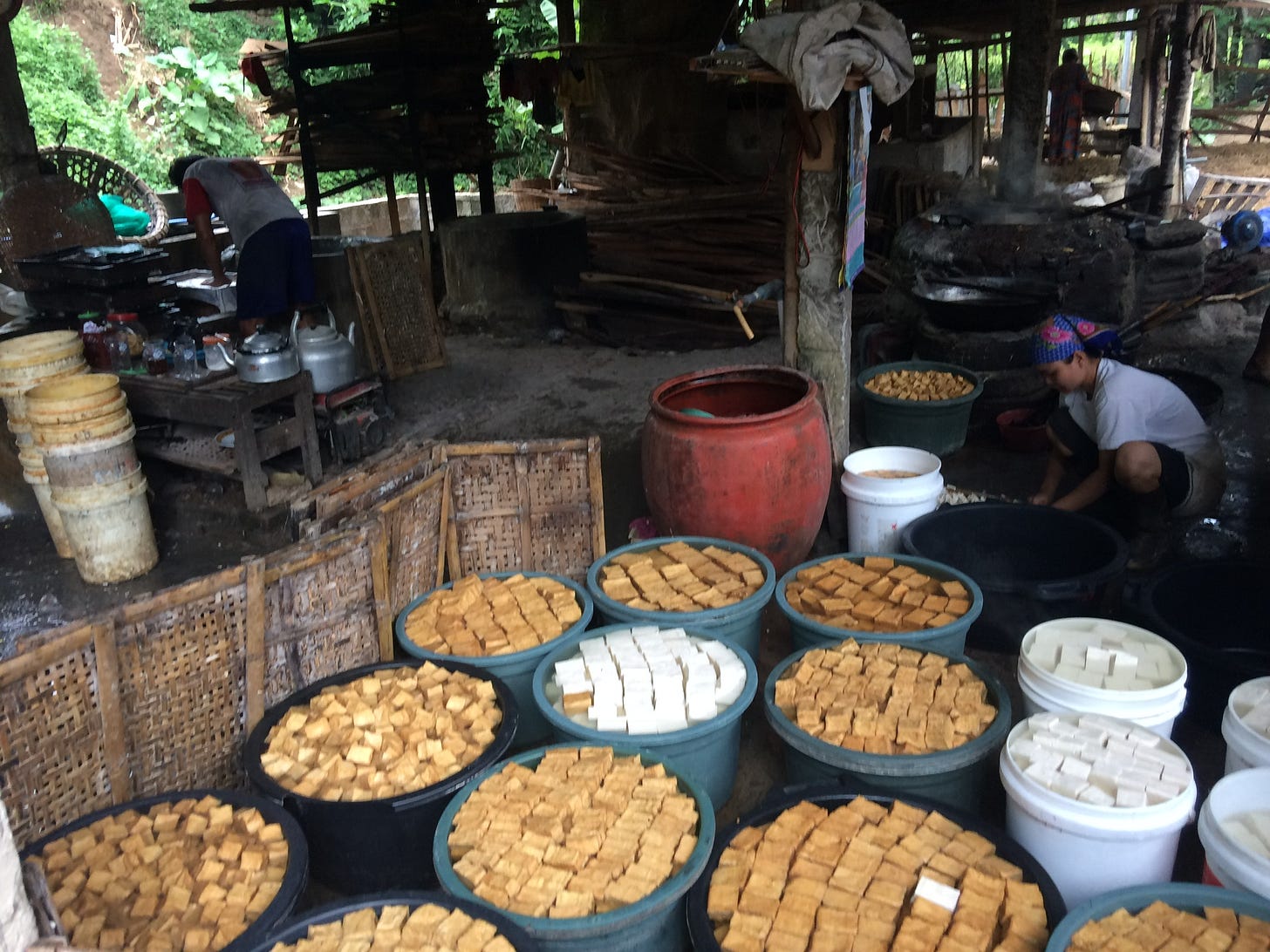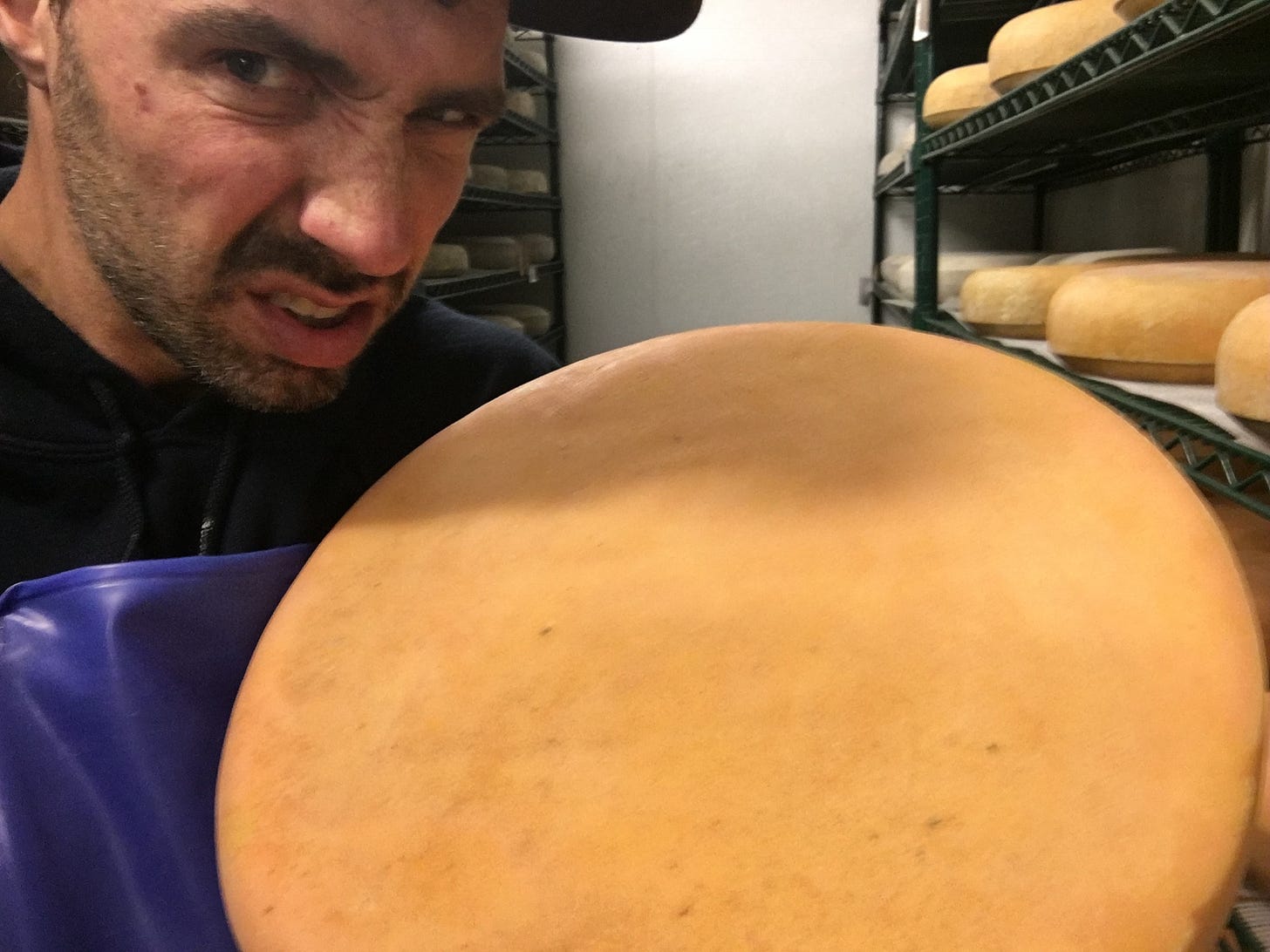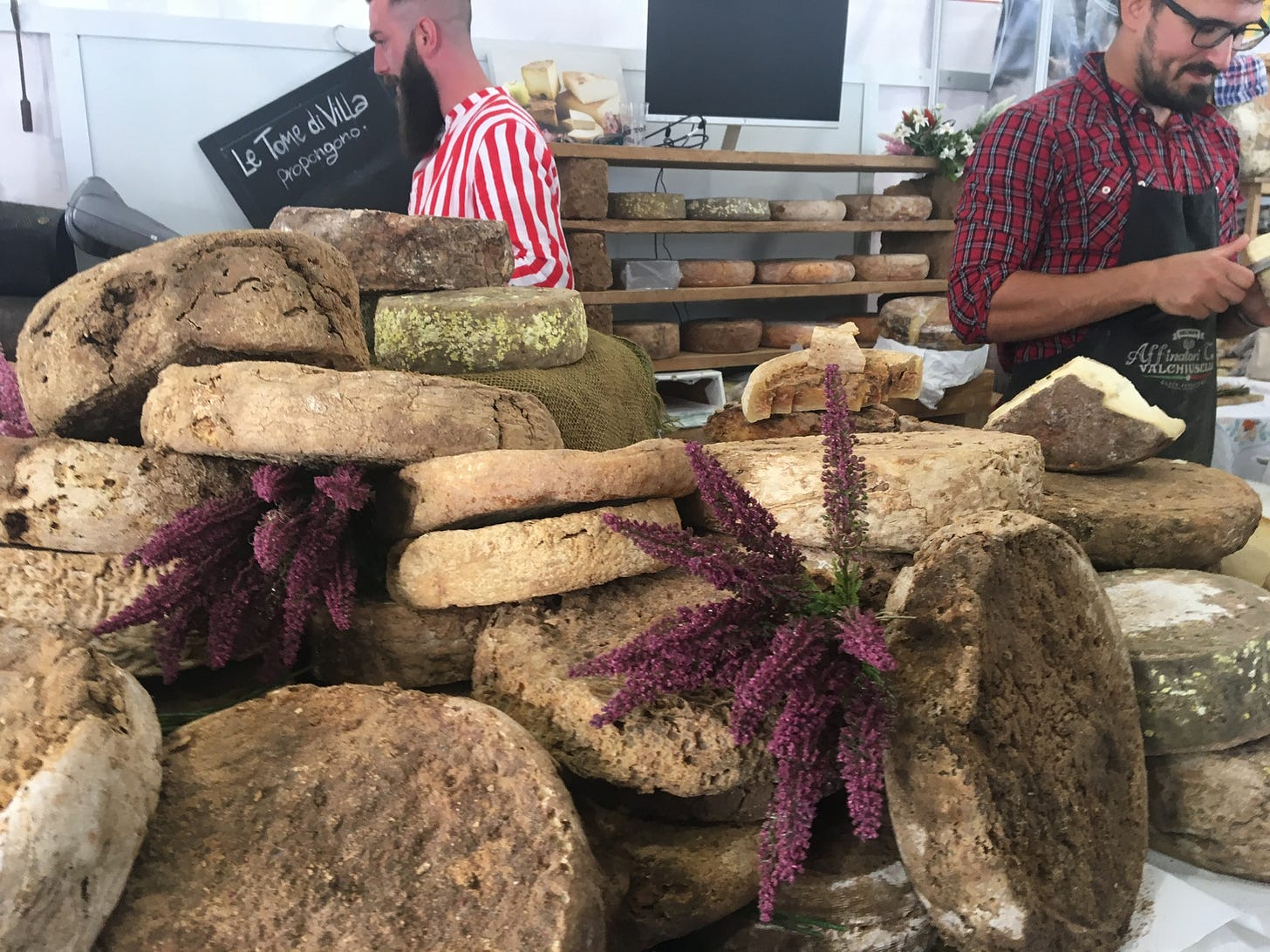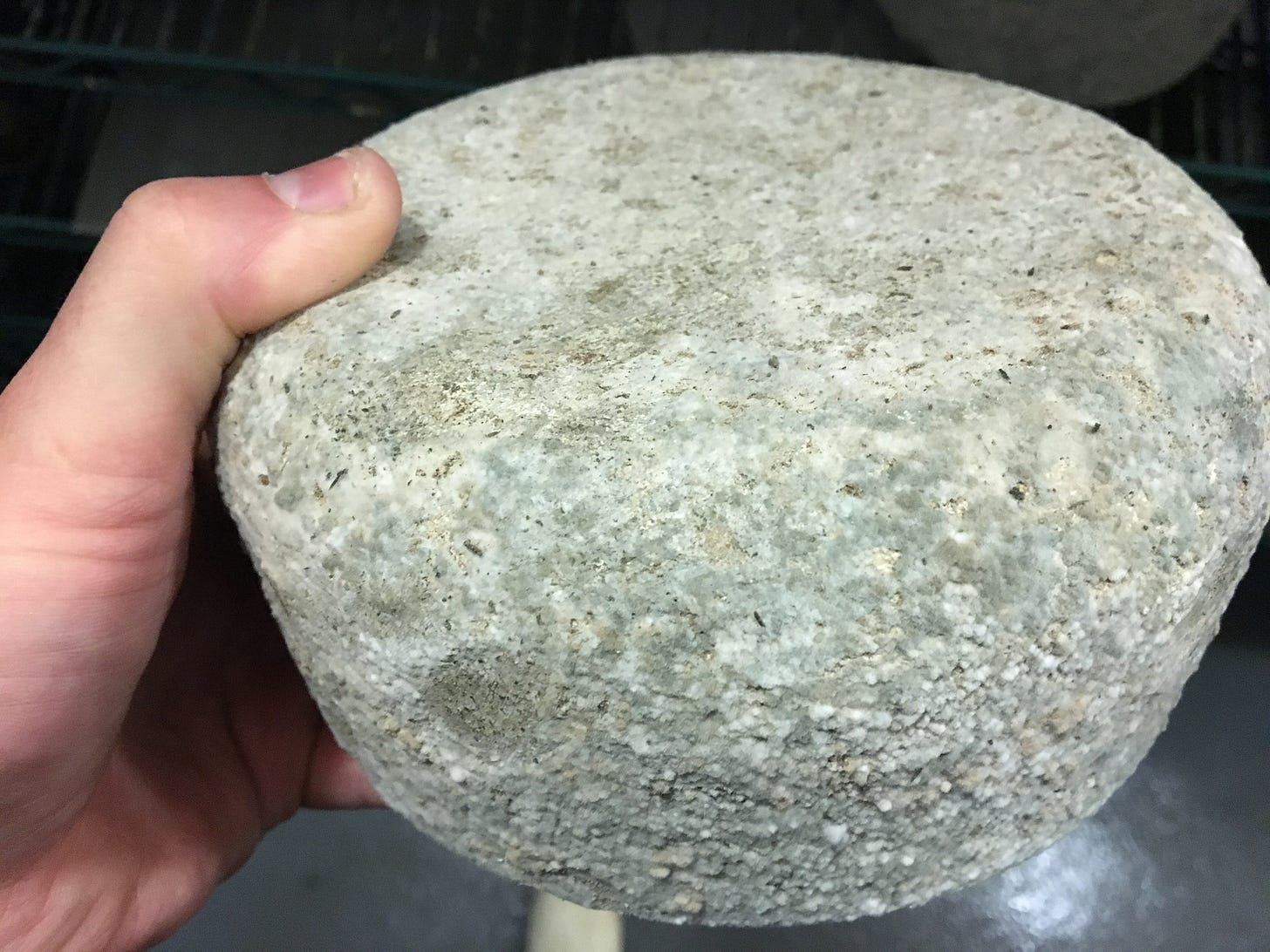Our sense of smell is intimately linked with our memories; a scent can evoke startling emotions, often you can’t consciously place the connection. “Why does that smell familiar, what does that smell remind me of?” A wiff can take you back to a moment in your past in a way that no other sense can. This a product of our evolutionary path as possibly the most omnivorous creature on Earth. I believe we can reclaim this role by embracing and exercising our sniffers, and challenging our dualistic, ethnocentric value judgments on food aromas. Cheesemaking is my path to this mountain top.
Smell hits us in a prelinguistic place, it’s primal. When we try to put smells into words, we struggle to find them and resort to metaphors. But sometimes the sensation can be more fully enjoyed without attempts to interpret, to simply say “awww….mmmm!…..hmmm?….or eeeeew!” These gutteral utterances are also globally shared, we actually do all speak a shared language. The language of yum. Some of the most singular food aromas have a biological basis and are very polarizing. For instance
TRUFFLES: this subterranean fungal fruit emits a strong odor to entice mammals to dig it up and spread its spores. It’s designed to intrigue, and whether you are a fan or not, it gets your attention.
Our aboreal ancestors survived a shifting climate by coming out of the trees, and adapting to life on terra firma. Moving into new lands and climates, we have adapted our diet to what is available in every corner of the planet. Most animals stick to foods they are familiar with, eating new things is a risky strategy. We have taken the route of experimentation, and use our aroma linked memory as a shield against the dangers of omnivorousness When something does make you sick, you remember it, and don’t want to eat it again. Children often comment negatively on the aromas wafting from a cheese cave. What would make you think it’s safe to eat moldy milk breaking down into a gooey mess? Just try it, young primate, you may learn to love it.
Fermentation and preservation have allowed us to create new symbiotic foods working with microbial allies that emit characteristic odors. A big part of figuring out how to make these properly relies on sensory analysis in its crudest form: seeing bubbles, the familiar sheen of yeast. We’ve all performed the smell test, that’s an ancient practice. What fascinates me is that some fermented foods containing mold and bacteria may trigger a innate aversion at first, but this can be overcome by cultural conditioning, or personal initiative. I know cheeses the smell of which causes my face to scrunch in revulsion, but I am also allured. I know what is behind the smell.
Our noses are highly developed chemical sensors, that can be trusted, and honed. But we have not been encouraged to use our noses as guides, and aspects of our diet and lifestyles have caused this sense to atrophy. Smell is defined negatively and associated with biology, to be civilized is to live in a sterile environment, free of organic odors. The world is a dirty smelly place, and the aromas of our bodies are things to ashamed of, something to mask with soap, perfume, air freshener. Being exposed to these and the various pollutants of civilized life blunts our sniffers. Spend a week in a remote natural setting and you will hit your sensory reset button. You may even start to smell like a human animal again.
Cheesemaking is an activity that can put you back in touch with this neglected sense. The smell of a creamery and aging space are fairly consistent and if something smells off, it probably is. Tasting milk as it sours, smelling the familiar aroma of yeasts coming in, breaking open a long aged cheese are pleasures of the craft. Fresh milk is the essence of birth, motherhood, and mammalian life, and as this goes down various paths of decay, something beautiful emerges from the breakdown of fat and protein. Life and death dance hand in hand in a circle of sensory bliss.
Cheesemakers of the past relied heavily on their senses to guide them through a make without Ph meters or thermometers. Many modern makers trust their equipment entirely and make by the numbers, not even tasting the milk and curd. I advocate a middle path of using all tools at your disposal, including your senses. You can develop an ability to sense the progress of acidification by using a ph meter as you taste curd. But the equipment can be wrong, and you can’t measure deliciousness. I suggest using objective measurement, but making certain calls during a make more by trained subjective feel and intuition.
Cheesemaking spaces have a similar sweet milk smell the world over. Aging rooms have a common cheese rind aroma, but it varies slightly, each one has its signature. The shift between these two areas can be a jarring experience, from the bright white day sweet milk clean area to the dark depths of earthiness, colorful molds lurk in a damp re-creation of a cave. Each aging naturally rinded cheese is a death sculpture, and the aromas of their lair can be off putting, or intriguing…..disgusting, or seductive. But they are never tame, and always evocative.
Walking through a dairy farm can be odiferous tour. Smells of dry hay and silage, the odor of each type of animal, urine and manure in fresh and composted forms. The freshly cleaned milking parlor has a thin layer of chemical sanitizer over the animal and milky scents that are embedded in the walls from decades of milk and manure building their olfacatory patina. An old shop full of tools and cobwebs has a characteristic smell that I love, and they smell similar the world over; grease, motor oil, and welded metal combine with notes of antique furniture in an attic, and musty basements. You could have good or bad associations with these smells, depending on your life’s history, and your social conditioning, and your openness to new experiences.
What I suggest is this, talk a walk on a beach, through a forest, a neighborhood market, or unfamiliar backstreet. Let your nose detect things without naming or judging them. Just let it come and go, but be aware of how it makes you feel, what associations and comparisons pop up. Pick things up and smell them. Maybe taste a food or beverage you haven’t had before. Appreciate the fact that you are alive, an omnivorous primate, possessing a sensitive chemical detector.

